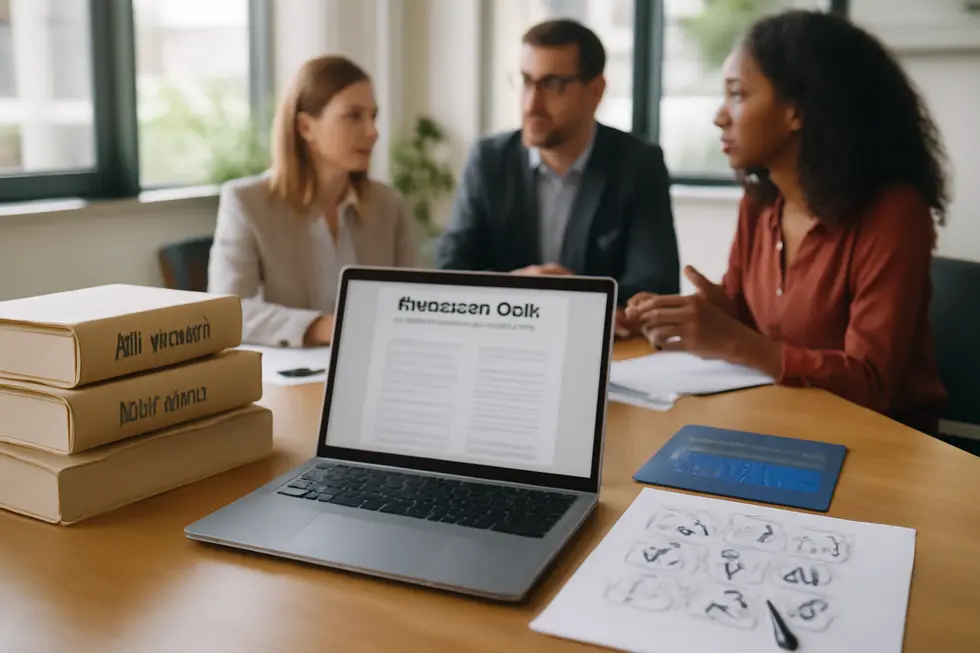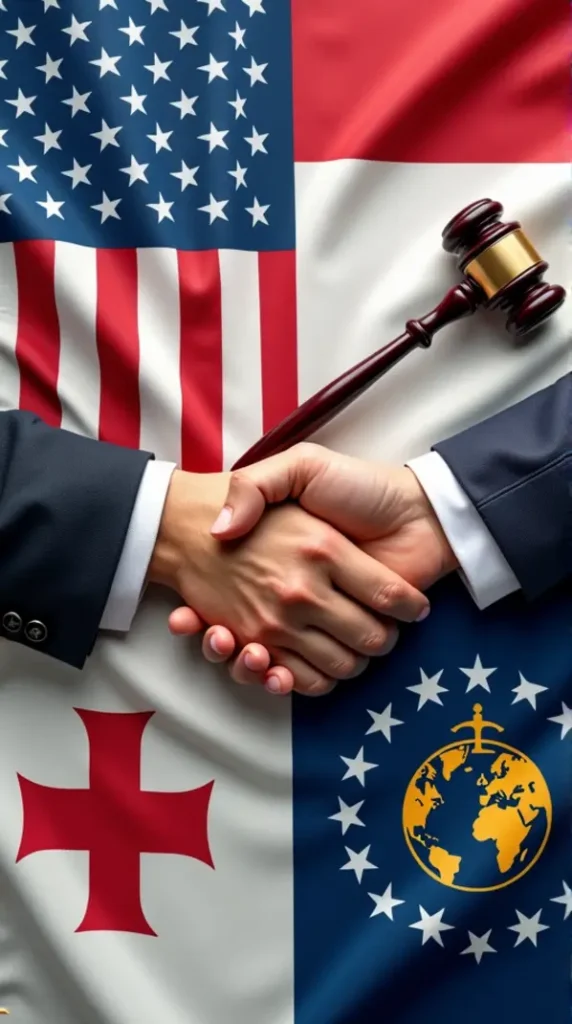Introduction
Understanding copyright law and the public domain is crucial for business owners who rely on creative content for marketing, branding, or product development. This knowledge helps avoid legal pitfalls and unlocks opportunities to use creative works without costly permissions. The first chapter explores the historical foundations that shaped today’s copyright framework, providing essential context for why copyright exists. Next, we break down how and when copyrighted works enter the public domain, revealing opportunities for businesses to innovate freely. The third chapter dives into legal nuances and exceptions, highlighting what remains protected to prevent unintentional infringement. Following this, practical tools and resources are presented to help business owners verify public domain status reliably. Finally, we discuss how copyright law and public domain influence creativity and culture, emphasizing their impact on business innovation and cultural growth. This comprehensive guide equips you with the knowledge to navigate copyright confidently and leverage public domain materials legally and strategically.
Tables of Contents
Chapter 1: Historical Foundations of Copyright Law and Public Domain
- From Printing Press to International Treaties: The Legal and Technological Roots of Copyright and Public Domain
- Balancing Incentives and Access: Economic and Societal Dynamics in the Origins of Copyright and Public Domain
- Pivotal Court Decisions Forging the Public Domain’s Role in Copyright History
Chapter 2: Mechanisms of Copyright Expiry and Entry into Public Domain
- Navigating Copyright Duration: Key Legal Timeframes Shaping Public Domain Entry
- Patent Expiry: A Parallel Gateway to the Public Domain for Innovation
- Complex Legal and Regulatory Influences Shaping Copyright Expiry and Public Domain Entry
Chapter 3: Navigating Legal Complexities Within Copyright Law and Public Domain
- Understanding Public Domain: Legal Criteria, Usage Nuances, and Digital Influence
- Fair Use in Copyright Law: Balancing Innovation, Expression, and Access Within Public Domain Frameworks
- Geopolitical and Institutional Layers Shaping Statutory Exceptions in Copyright and Public Domain
Chapter 4: Practical Tools and Resources to Determine Public Domain Status in Copyright Law
- Essential Databases and Digital Libraries for Navigating Public Domain Status
- Navigating Public Domain Status Through Interactive Tools and Authoritative Records
- Leveraging Author Death Dates and Publication Records to Navigate Public Domain Verification
Chapter 5: Implications and Importance of Copyright Law and Public Domain for Creativity and Culture
- Navigating Technological Shifts: AI, Copyright, and the Public Domain’s Role in Cultural Innovation
- Navigating the Economic and Geopolitical Landscape of Copyright and Public Domain
- How Copyright Law and Public Domain Foster Cultural Evolution and Creative Expression
Chapter 1: Historical Foundations of Copyright Law and Public Domain

1. From Printing Press to International Treaties: The Legal and Technological Roots of Copyright and Public Domain
The origins of copyright law and the public domain are deeply intertwined with pivotal technological and legal transformations that reshaped how creative works were produced, distributed, and protected. The invention of the printing press revolutionized access to knowledge by enabling rapid, large-scale reproduction of books and other literary materials. This breakthrough dramatically reduced the scarcity of written works but also intensified unauthorized copying and piracy. Such challenges highlighted the need for a legal framework offering creators and publishers exclusive rights to their works, laying the groundwork for modern copyright.
Legally, the Statute of Anne enacted in 1710 in Britain marked the first comprehensive attempt to balance creators’ rights with public access. It shifted power from publishers, who until then held effective monopolies through entities like the Stationers’ Company, to authors themselves. Introducing limited copyright terms—initially 14 years with one renewal—this law set a precedent ensuring copyrights were temporary rather than perpetual. Later, the 1774 landmark case Donaldson v. Becket further clarified that copyrights expire and works enter the public domain, becoming free for public use.
The industrial revolution propelled advancements in printing and communication technologies, intensifying the need for cross-border copyright protections. This led to international cooperation with the 1886 Berne Convention, establishing global standards for copyright, including the principle of “national treatment,” which obliges countries to protect foreign authors’ works equally. Although the United States joined the Berne Convention only in 1988, this treaty significantly influenced copyright’s evolution worldwide.
Together, these technological breakthroughs and legal developments created the foundation for today’s copyright system—granting creators temporary exclusive rights while ensuring that works ultimately enrich the public domain. To explore copyright basics and its relevance for authors and creators today, see this detailed basics of copyright law.
For a comprehensive examination of the legislative origins and international treaties shaping copyright, Britannica provides an excellent overview.
2. Balancing Incentives and Access: Economic and Societal Dynamics in the Origins of Copyright and Public Domain
The historical foundations of copyright law reveal a deliberate effort to strike a balance between rewarding creators and enriching society. From its inception, copyright granted authors exclusive rights for a limited time, encouraging the creation of original works while promising eventual public access. This dual purpose is exemplified in the landmark 1774 Donaldson v. Becket case, which rejected perpetual copyright and established the concept of the public domain—where works enter free use upon copyright expiration. This principle was enshrined in the U.S. Constitution and the Copyright Act of 1790, which provided authors with exclusive rights for 14 years, renewable once, thus incentivizing creativity without permanently restricting public use.
Economically, copyright serves as a mechanism transferring income from consumers to rights holders by allowing creators to charge monopoly prices, elevating the cost of access. While this promotes economic reward for authors, it also produces a deadweight loss—consumers may forgo access due to higher prices, and follow-on creativity can be impeded if using existing works becomes costly or legally complex. Thomas Macaulay’s 1841 characterization of copyright as “a tax on readers for the purpose of giving a bounty to writers” highlights this tension between authorial reward and public cost.
Societal impacts stem from copyright’s role in advancing “science and useful arts” by temporarily securing exclusive rights that fuel innovation and cultural production. Yet, the public domain’s existence ensures a rich commons where knowledge and culture can circulate freely once protections lapse. This cyclical access promotes education, artistic reinterpretation, and the spread of ideas beyond the confines of legal monopoly.
Thus, early copyright law reflects a careful negotiation: fostering economic incentives that encourage original creation while ultimately allowing society to benefit from unrestricted use of expired works. This balance is fundamental to understanding the economic and social rationale underlying copyright’s historical beginnings.
For economic perspectives on copyright’s effects, see the analysis by Landes & Posner and Macaulay’s speech in this detailed review. For more about protections in creative works, explore the basics of copyright law in business contexts.
3. Pivotal Court Decisions Forging the Public Domain’s Role in Copyright History
Judicial Landmarks Shaping the Public Domain
Judicial rulings have profoundly influenced the evolution of the public domain within the foundation of copyright law. A defining moment came with Donaldson v. Becket (1774), where the British House of Lords decisively rejected the notion of perpetual copyright. The court established that copyright grants a temporary exclusive right, after which works revert to the public domain for unrestricted public use. This principle became a cornerstone that shaped both British and later American copyright frameworks.
Long before this case, the Statute of Anne (1710) introduced the revolutionary idea that authors possess a limited-term monopoly over their creations. It marked a shift from uncontrolled piracy to legally sanctioned protection, balancing authors’ interests with eventual public access. This statute laid the groundwork for the public domain concept by affirming that copyrights are not indefinite.
In the United States, judicial interpretations and statutory reforms have continued this trajectory. The Copyright Act of 1976 codified the finite nature of copyright protection, explicitly incorporating the idea that after expiration, works join the public domain to foster creativity and cultural enrichment. Courts have further shaped boundaries through landmark rulings addressing modern challenges, such as those involving digital technologies and software interfaces.
Notably, cases like Google Inc. v. Oracle America, Inc. highlight how courts adapt copyright law principles amid technological innovation, clarifying the limits of protection and the scope of the public domain in the digital era. Through centuries, these judicial precedents have balanced creators’ rights with societal benefit, reinforcing the public domain as an indispensable element of copyright law.
For a broader understanding of copyright protections, visit basics of copyright law.
Sources:
https://www.etblaw.com/historical-cases-that-shaped-intellectual-property-law/
Chapter 2: Mechanisms of Copyright Expiry and Entry into Public Domain
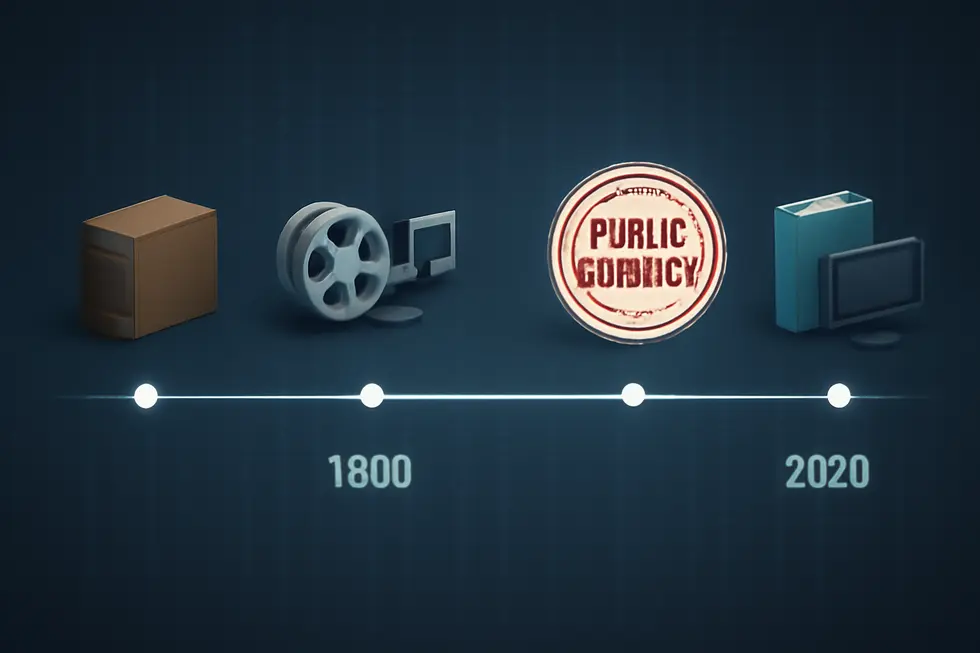
1. Navigating Copyright Duration: Key Legal Timeframes Shaping Public Domain Entry
Copyright protection is governed by precise legal timeframes that determine when a work transitions into the public domain. In the United States, these rules depend heavily on the work’s publication date and nature, creating a structured yet complex framework that balances creators’ rights with public access.
Works published before 1929 generally become part of the public domain as of January 1 following the completion of their copyright term, which lasts up to 95 years if properly renewed. If renewal was neglected, the term was shorter, often about 28 years, allowing earlier entry into public domain. For works published between 1929 and 1963, copyright also lasts 95 years from publication only if the registration was renewed; failure to renew causes the work to fall into public domain sooner.
For works created after January 1, 1978, protection is tied to the author’s life plus an additional 70 years, ensuring long-lasting control over the work. Anonymous or corporate works follow different rules, either lasting 95 years from publication or 120 years from creation, whichever expires first. Notably, all copyrights expire on December 31 of the final year, standardizing the transition date annually.
In addition to copyright, patent terms also impose finite exclusivity, typically lasting 20 years from the initial filing date. Upon expiration, patented inventions enter the public domain permanently, opening up unrestricted use by the public.
The limited duration of intellectual property rights is designed to incentivize innovation while eventually enriching society with unrestricted access to creative and inventive works. Creators and heirs may exercise termination rights during specific statutory periods, potentially reclaiming copyrights and affecting public domain status.
This system’s nuances demand careful examination when determining a work’s status. Resources like Wikimedia Commons’ Copyright Rules by Territory offer detailed guidance. For practical business perspectives on copyright, including protection and duration, see this comprehensive guide to copyright protection.
2. Patent Expiry: A Parallel Gateway to the Public Domain for Innovation
Patent expiry serves as a critical counterpart to copyright expiry in ushering works and inventions into the public domain. Just as copyright protection grants creators exclusive rights for a limited time before their works become freely usable, patents confer monopoly rights on inventors—typically for 20 years from the filing date for utility patents. When this finite term concludes, the invention ceases to be proprietary, entering the public domain and enabling unrestricted use by anyone without needing permission or risking infringement.
The parallels between these intellectual property regimes are striking: both balance incentivizing innovation with eventual dissemination. Copyrights protect creative expression, while patents safeguard functional inventions. Yet both systems ultimately prioritize public access to knowledge and creative resources once the temporary exclusivity expires. Unlike copyrights, patents in the U.S. also require periodic maintenance fees at intervals (3.5, 7.5, and 11.5 years) to remain in force; failure to pay these fees causes early expiration and accelerates public domain entry.
Upon patent expiration or abandonment, the formerly protected invention is free for manufacture, use, and sale, fostering competition and technological advancement. Industries such as pharmaceuticals rely heavily on patent terms, though regulatory exclusivities may extend market protections beyond patent life. However, true public domain status and generic competition only arise after all such protections lapse.
Understanding patent expiration is therefore essential in appreciating how intellectual property rights eventually yield to public domain status, enriching society’s collective pool of inventions. This dynamic complements copyright expiry mechanisms by ensuring that innovation, whether artistic or technical, ultimately becomes a shared resource to stimulate further creativity.
For deeper insight into how expired patents enter the public domain and influence market dynamics, see this detailed analysis of patent expiry’s role in pharmaceutical manufacturing: https://www.drugpatentwatch.com/blog/abandoned-and-expired-patents-in-pharma-manufacturing/.
3. Complex Legal and Regulatory Influences Shaping Copyright Expiry and Public Domain Entry
The transition of creative works from protected status under copyright to the public domain involves a nuanced interplay of legal and regulatory factors, which vary considerably depending on jurisdiction, medium, and procedural formalities. Central to this transformation are statutory duration requirements, which in many countries—including the United States—typically hinge on either a fixed number of years from the date of publication or the author’s lifespan plus an additional term, often 70 years post-mortem. For example, in the U.S., works published before 1925 are generally public domain, while those published between 1923 and 1963 required timely copyright renewal to maintain protection; failure to renew accelerated their entry into public domain.
Beyond duration, the medium of the work plays a pivotal role. Different categories such as literary, musical, visual arts, or software can be subject to varying rules concerning copyright length and formal requirements. This variation reflects the legal frameworks’ attempts to accommodate diverse creative expressions appropriately. Additionally, copyright notices were historically crucial: works published before March 1, 1989, without a proper copyright notice might lack protection, rendering them public domain. Such technical aspects underscore how procedural compliance significantly influences whether a work remains under copyright or passes into public domain.
Licensing arrangements and ownership transfers further complicate this landscape. While copyright grants exclusive rights, licenses specify the scope, duration, and territorial limits of permitted uses, operating within the broader framework of ownership until the copyright expires. Interestingly, patent law, though distinct, parallels copyright in its temporary monopoly, typically lasting 20 years from filing, after which innovations enter the public domain, promoting public access much like expired copyrights.
Jurisdictional differences also add layers of complexity, as national laws govern the specifics of renewal, term lengths, and formalities. This requires careful navigation when assessing a work’s copyright status internationally. For those seeking clarity, official resources such as the U.S. Copyright Office circulars offer indispensable guidance. Understanding these multifaceted influences is essential for anyone interpreting when and how works become free for public use.
For more detailed insights on the formalities affecting copyright protection, see copyright notice requirements and protection.
External Reference: [U.S. Copyright Office circular and guidance resources]
Chapter 3: Navigating Legal Complexities Within Copyright Law and Public Domain
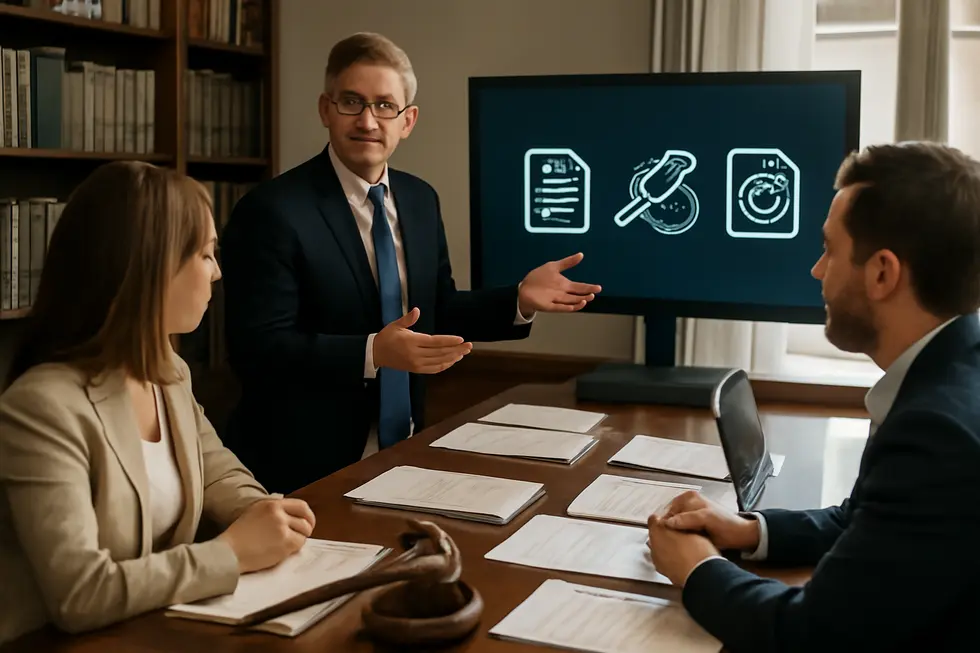
1. Understanding Public Domain: Legal Criteria, Usage Nuances, and Digital Influence
Understanding the Public Domain and Its Legal Nuances in Copyright Law
The public domain encompasses creative works no longer shielded by copyright protection, granting the public unrestricted rights to use, copy, and adapt these materials freely. A work typically enters this realm when copyright expires—often after 95 years for published works in the U.S.—or fails to meet formal requirements like registration or notice in earlier eras. Unpublished creations receive protection for the author’s life plus 70 years, underscoring how timing and legal formalities critically shape public domain eligibility. Moreover, certain materials have never qualified for copyright, instantly becoming part of the public domain.
Legal subtleties arise because while individual works may be free to use, compilations curated with original selection or arrangement can carry their own copyrights. This complicates the use of collections containing public domain items, as the compilation’s creative contribution is protected even if underlying works are not. Despite no legal obligation, proper attribution remains best practice to respect original creators and avoid plagiarism claims.
Digital advancements have revolutionized access and distribution of public domain content, enabling broader preservation and creative reuse without altering the underlying legal definitions. Technologies facilitate effortless reproduction and dissemination, but copyright protections continue to apply strictly where relevant. Such clarity ensures that while public domain materials inspire new creations and commercial projects freely, the original copyright boundaries remain intact.
For those navigating these complexities, resources like the Copyright Guide by Northeast State Library provide invaluable assistance to verify status based on publication dates and legal criteria. This ongoing intersection of law and technology underscores the importance of informed understanding when engaging with public domain works.
For further insight into foundational copyright concepts, see our discussion on the basics of copyright law.
2. Fair Use in Copyright Law: Balancing Innovation, Expression, and Access Within Public Domain Frameworks
Fair use plays a pivotal role within the intricate landscape of copyright law and public domain, serving as a flexible legal exception that allows limited use of copyrighted materials without permission. This doctrine encourages creativity, scholarship, and free expression by permitting uses like criticism, commentary, news reporting, teaching, and research, which are essential for societal progress. Unlike the static nature of copyright terms, fair use requires a nuanced, case-by-case judicial evaluation based on four core factors: the purpose and character of the use, including whether it is transformative or commercial; the nature of the original work; the amount and substantiality of the portion used; and the effect on the market or value of the copyrighted material. This balancing act ensures that both creators and the public benefit, promoting a dynamic exchange of ideas while protecting economic incentives.
The doctrine’s inherent flexibility allows it to adapt alongside technological advances and evolving social norms but also introduces uncertainty for users and rights holders. Ambiguity around fair use often leads to legal challenges, which can be costly and complex, yet it prevents overly broad monopolization of cultural and informational content. Alongside fair use, the public domain represents works free from copyright restrictions, offering unrestricted access that fosters innovation and cultural enrichment. Public domain materials can be freely used, remixed, and built upon, fueling new creativity without legal barriers.
Economically, fair use supports education, journalism, and transformative creativity by lowering barriers to information access. Socially, it safeguards freedom of expression and diversity in creative voices by limiting exclusive control over works. Together, fair use and public domain status sustain a balanced ecosystem where intellectual property rights coexist with vital public interests. For further details on how fair use operates within copyright law, consult this resource on the basics of copyright law and fair use. To better understand when and how to protect creative works, explore insights on copyright protection for books, movies, and songs.
3. Geopolitical and Institutional Layers Shaping Statutory Exceptions in Copyright and Public Domain
Understanding the statutory exceptions and legal nuances within copyright law and public domain demands a nuanced appreciation of geopolitical and institutional dynamics. In the United States, a critical distinction exists regarding government-produced works: official government edicts such as judicial opinions and legislative texts automatically reside in the public domain. Yet, works created by government contractors or entities funded by the government may retain copyright protections, illustrating how authorship and source influence legal status. Furthermore, U.S. law embeds protections for educational activities under Section 110(1), permitting face-to-face instructional use of copyrighted works without infringing rights. This statutory carve-out underscores the policy goal of balancing creators’ interests with public educational needs.
Complementing these provisions is the fair use doctrine found in Section 107, which authorizes limited use of copyrighted content for purposes like criticism, commentary, and scholarly research. Its application is complex, requiring judicial weighing of purpose, nature, amount, and market effects, reflecting a case-by-case approach rather than strict rules. Beyond copyright itself, the intersection with digital platform regulation creates further legal intricacies. Federal immunities for content moderation coexist with state-level attempts to regulate speech on private platforms, revealing how governance models intersect with intellectual property rights.
Globally, statutory exceptions vary widely due to diverse national statutes and differing institutional frameworks governing authorship and rights allocation. Many countries offer statutory exemptions for educational use, but the scope varies, influenced by local priorities balancing public access and copyright holders’ protections. Moreover, whether government works enter public domain depends on whether they are produced by state employees or contractors—highlighting how institutional authorship drives legal outcomes.
These geopolitical disparities and institutional constructs emphasize that statutory exceptions in copyright cannot be understood purely as legal abstractions; they are deeply embedded within governmental structures, educational policies, and evolving digital governance. For those seeking detailed guidance on U.S. government work exclusions, the Wikimedia Commons Copyright Rules by Territory page is an invaluable resource. This multifaceted legal framework calls for careful navigation to leverage public domain works responsibly while respecting the complex institutional boundaries of copyright law.
For deeper insights, see Benefits of Copyright Registration in Business.
Source: https://commons.wikimedia.org/wiki/Commons:Copyrightrulesbyterritory/UnitedStates
Chapter 4: Practical Tools and Resources to Determine Public Domain Status in Copyright Law
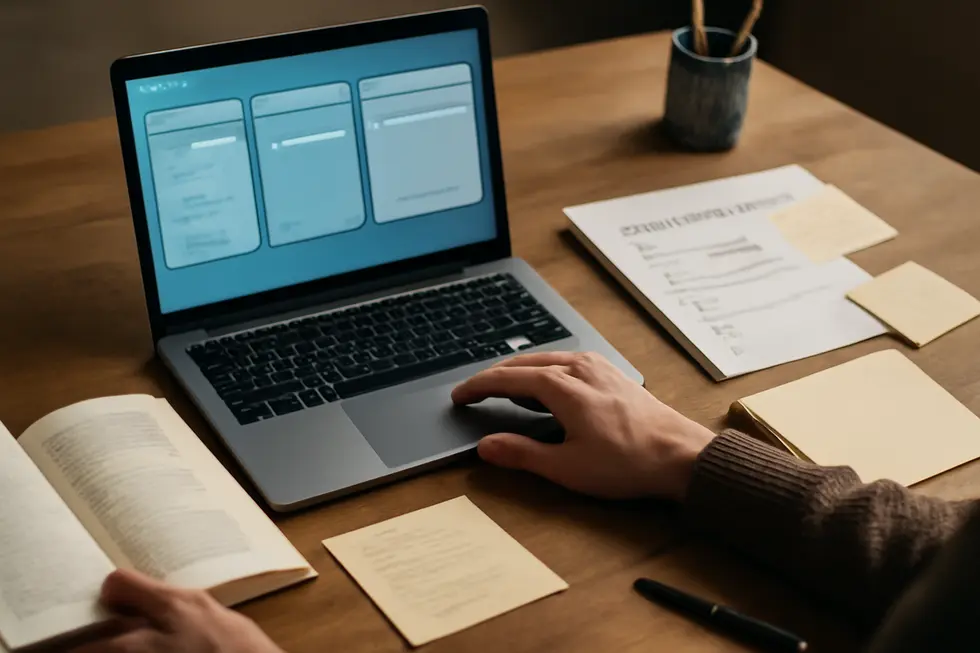
1. Essential Databases and Digital Libraries for Navigating Public Domain Status
Determining whether a work has entered the public domain can be complex, but several well-established databases and digital libraries serve as indispensable tools for researchers and creators alike. One of the foremost resources is a large digital repository specializing in U.S. cultural heritage materials. This platform provides free access to numerous books and other text-based works, particularly those published before 1930, which as of 2025 are generally in the public domain. If a work is fully accessible here, it is typically safe to assume that it is free from copyright restrictions.
Another critical resource is a renewal database maintained by a major academic institution, which documents copyright renewals for works published before 1964. Since copyright duration depended heavily on timely renewal during this period, this resource is invaluable in confirming whether such works have lapsed into the public domain. Complementing this, an online index of books and magazines also helps verify the public domain status of materials, especially those whose renewal records may be ambiguous or incomplete.
Many libraries and universities further provide curated tables and guides summarizing copyright status by publication date, renewal conditions, and applicable copyright formalities. These guides distill complex legal criteria into accessible formats, enabling quick reference and sound judgment. Additionally, scholarly communication guides often clarify related concepts like fair use and copyright exceptions, creating a broader context for responsible use of copyrighted and public domain works.
Notably, federal government works are automatically in the public domain, simplifying verification in that category. Combining these resources allows users to cross-reference publication dates, renewal status, registration formalities, and jurisdictional specifics, significantly reducing uncertainty.
For those seeking a comprehensive introduction and direct access to these key databases, an extensive copyright reference guide published by a reputable university library proves an excellent starting point. This resource integrates practical tools and explanatory content to aid in navigating the nuances of public domain determination.
To better understand how these tools fit within broader intellectual property concerns, exploring the basics of copyright law provides valuable background that complements effective public domain research.
2. Navigating Public Domain Status Through Interactive Tools and Authoritative Records
Determining if a work resides in the public domain requires careful evaluation of multiple factors, and this process is greatly facilitated by a combination of interactive tools and official records. Interactive platforms guide users step-by-step, interpreting complex copyright rules such as publication dates, renewal requirements, and author life spans. These tools often present Q&A wizards that simplify assessments, especially when confronting intricate cases like works with unclear renewal status or unpublished materials. Additionally, online image search features that filter by Creative Commons licensing help in quickly identifying usage permissions for digital content.
Complementing these user-friendly utilities are official records that provide authoritative confirmation of a work’s copyright status. The U.S. Copyright Office databases serve as the primary source for verifying registrations and renewals, which are critical for works published before 1964, since failure to renew typically results in public domain entry. Scholarly-curated databases, such as those maintained by universities and public domain repositories, offer digitized access to confirmed public domain materials, significantly reducing research time.
Together, these resources allow creators, researchers, and users to systematically analyze whether a work can be freely used without infringing copyright. For instance, materials published in the U.S. before 1930 are generally accessible in the public domain, and their status can be cross-checked via these official databases and interactive guides. Such comprehensive verification is essential in navigating evolving copyright statutes and international agreements while avoiding infringement risks.
For a practical approach combining these tools and records, users can consult trusted resources that integrate interactive guidance with access to official renewal databases and public domain repositories like HathiTrust. This integrated methodology streamlines the complex evaluation of copyright and public domain status, empowering informed and lawful use of creative works.
More on how copyright protection affects creative works can be found in the basics of copyright law.
External resource for deeper verification: https://library.northeaststate.edu/c.php?g=1251786&p=9166459
3. Leveraging Author Death Dates and Publication Records to Navigate Public Domain Verification
Determining whether a work resides in the public domain hinges critically on establishing precise author death dates and publication information. Since copyright duration in the United States typically spans the life of the author plus 70 years, confirming an author’s death is indispensable. Researchers rely on a blend of official, biographical, and legal resources to verify this crucial factor.
The U.S. Copyright Office’s Public Catalog serves as a primary gateway for publication and copyright registration data, encompassing records from 1978 onward. For earlier works, resources like the Stanford Copyright Renewal Database are invaluable, offering access to renewal and registration documents vital to understanding copyright status during the mid-20th century. These records reveal not only publication dates but also whether copyright protections were formally renewed—a requirement for works published between 1923 and 1963.
Biographical information complements these official records by confirming death dates through obituaries, biographies, and archival sources. When a work has multiple authors, investigators determine the death of the last surviving author, as this extends the copyright term. Legal statutes codified in Title 17 of the U.S. Code provide the framework for these calculations, with specialized tools available to assist in interpreting and managing rights, especially for heirs aiming to exercise termination or renewal rights.
Where official records or biographical data fall short, alternative avenues such as galleries, auction houses, or recent users of the work may help identify copyright holders or heirs. Public domain determination guides and interactive tools further aid in analyzing publication chronology, renewal status, and formal notices, streamlining the evaluation process.
Together, these resources form an essential toolkit for anyone seeking to accurately establish whether a creative work has entered the public domain, enabling lawful use or derivative creation without the risk of infringement. For authoritative verification, starting with the U.S. Copyright Office Public Catalog and Stanford’s Renewal Database is recommended.
For further guidance on formalities affecting copyright status and public domain entry, see the Copyright Protection for Books, Movies, and Songs blog.
More detailed official records are accessible via the U.S. Copyright Office Public Catalog at https://cocatalog.loc.gov/
Chapter 5: Implications and Importance of Copyright Law and Public Domain for Creativity and Culture
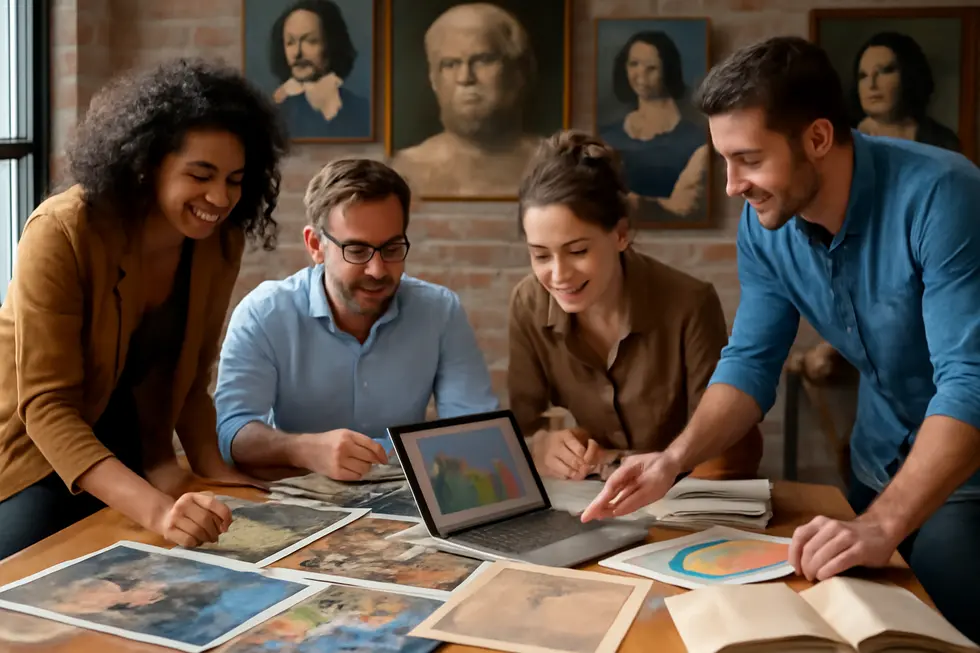
1. Navigating Technological Shifts: AI, Copyright, and the Public Domain’s Role in Cultural Innovation
The rapid advancement of technology, particularly generative AI, significantly impacts the way copyright law and the public domain shape creativity and culture. Traditional copyright frameworks were designed with clear distinctions between human creation and dissemination. However, AI technologies blur these lines by autonomously generating works or assisting creators in transforming existing materials. This shift encourages a reevaluation of copyright’s focus from the act of creation to the regulation of how works are distributed and shared, emphasizing accountability for those who disseminate content rather than for the tools that produce it.
In creative industries such as fashion, music, and visual arts, AI analyzes extensive archives—including copyrighted materials—to inspire new outputs. Legal concerns largely arise when these AI-generated works fail to transform the original sufficiently or unlawfully reproduce protected content. When creative modification occurs, AI-assisted works can be recognized as novel, promoting innovation that expands cultural expression beyond prior limitations. This technological capacity unlocks creative potential that was previously unattainable, enriching cultural landscapes.
Yet, these advances introduce complex legal challenges around ownership, licensing, and fair remuneration. Current lawsuits highlight tensions as AI companies utilize copyrighted content without explicit permission, prompting policymakers to consider reforms. The goal is to balance technological progress with creators’ rights, fostering collaboration that benefits both innovators and original artists.
Importantly, copyright also plays a democratic role by nurturing free expression and supporting a vibrant cultural sector relatively independent of state control. As technology evolves, laws must adapt to safeguard this balance—preserving creators’ rights while enabling transformative and educational uses essential to cultural vitality.
The public domain remains a critical resource, offering a wealth of free material for creative reuse. AI’s ability to leverage public domain content magnifies its cultural influence, making the robust maintenance of this domain vital to sustaining innovation and diversity in an increasingly digital society.
For deeper insights into copyright protections and business implications, see this detailed exploration of copyright protection for books, movies, and songs.
Further understanding of the evolving landscape is available at Wikimedia Commons’ Copyright Rules by Territory.
2. Navigating the Economic and Geopolitical Landscape of Copyright and Public Domain
The dynamic interplay between copyright law and the public domain shapes not only creativity but also the economic and geopolitical fabric of societies. Copyright grants creators exclusive rights, transforming intangible ideas into valuable assets that drive economic growth. By protecting original works, it incentivizes investment across various creative sectors, including literature, art, and technology, fostering competitive markets where innovation thrives. This legal protection has historical roots linking it to industrial and cultural advancements that democratized knowledge while generating wealth.
Yet, copyright’s temporary scope ensures that, after expiration, these cultural treasures enter the public domain—becoming freely accessible resources that fuel further creativity without legal encumbrances. This balance between protection and openness underpins vibrant cultural ecosystems and continuous innovation.
On a geopolitical scale, nations strategically leverage intellectual property frameworks to assert cultural influence and economic leadership. Partnerships that blend traditional art markets with emerging technologies, such as artificial intelligence, exemplify this trend by reshaping international cultural diplomacy and competitive positioning. These collaborations highlight how intellectual property regimes are pivotal tools in global relations and national identity projection.
However, maintaining equilibrium is complex. Copyright law must safeguard creators’ economic and moral rights without stifling derivative creativity or freedom of expression. Legal discourse increasingly focuses on reconciling these interests within evolving frameworks, especially as technologies like AI challenge conventional copyright boundaries and enforcement.
This ongoing negotiation illustrates why robust, adaptable copyright systems, coupled with a flourishing public domain, remain essential. They support not only economic vitality but also rich cultural dialogue, ensuring that creativity continues to evolve and resonate across borders and generations.
For further insights on the economic role of intellectual property protection, see this intellectual property overview.
More detailed perspectives on copyright’s cultural and economic impact can be found in this external resource: The historical role of copyright in wealth creation and access.
3. How Copyright Law and Public Domain Foster Cultural Evolution and Creative Expression
Copyright law plays a pivotal role in shaping cultural landscapes by granting creators exclusive rights for a limited time. This protection encourages innovation and sustains creative industries, allowing authors to benefit economically and fueling diversity in political, social, and aesthetic expression. Such legal safeguards reduce dependence on state patronage or elite gatekeeping, helping democratize culture and amplify varied voices.
However, copyright’s protective nature can also restrict the creative freedoms of subsequent artists who rely on existing works. This tension between safeguarding original creators and enabling derivative creativity fuels debates on whether copyright should be viewed primarily as a freedom of artistic expression. Prioritizing original rights excessively risks stifling cultural development by limiting the reimagining and reinterpretation of works that enrich society.
The public domain complements copyright by providing unrestricted access to expired, forfeited, or never-protected works. This openness enables anyone to freely use, adapt, and share cultural artifacts, lowering barriers for education, public health, and creative innovation. It ensures a vibrant cultural commons where ideas circulate freely and new works can flourish, fueling continuous cultural evolution.
Emerging technologies such as artificial intelligence bring new complexities, particularly regarding the use of copyrighted works in training datasets. Legal and ethical concerns have surfaced around fair use, creator rights, and representation. Some artists worry about exploitation when AI replicates their styles without attribution or compensation, highlighting the need for transparent, ethical AI practices that respect creators while encouraging innovation.
Together, copyright law and the public domain create a delicate equilibrium that both incentivizes creators and preserves society’s access to shared cultural resources. This balance is vital to sustaining creativity, promoting cultural diversity, and supporting a vibrant democratic discourse.
For a deeper exploration, the UCLA Ethnomusicology guide offers valuable insights into copyright and fair use considerations: https://www.ethnomusic.ucla.edu/research-fair-use
Learn more about the nuances of copyright protections in creative works at copyright protection for books, movies, and songs.
Final thoughts
For business owners, mastering copyright law and understanding the public domain are strategic imperatives. These legal frameworks dictate how creative content can be used, protected, or leveraged for growth. By appreciating the historical context, recognizing when copyrights expire, navigating legal exceptions, utilizing practical resources, and understanding the broader cultural impact, businesses can confidently integrate creative works into their operations without infringement risks. Harnessing public domain materials unlocks valuable opportunities to innovate cost-effectively and ethically. Ultimately, this knowledge supports sustainable business development and helps cultivate a vibrant marketplace of ideas.
Get your trademark today! Thousands have protected their brand by filing a trademark. What are you waiting for? Start your trademark application!
About us
The globe’s top website for registering trademarks and safeguarding your brand, name, logo, or slogan. We simplify intellectual property protection and empower businesses to secure their unique identity in the marketplace.
